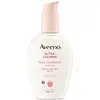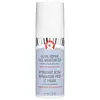What's inside
What's inside
 Key Ingredients
Key Ingredients

 Benefits
Benefits

 Concerns
Concerns

 Ingredients Side-by-side
Ingredients Side-by-side

Butyl Methoxydibenzoylmethane 3%
UV AbsorberEthylhexyl Methoxycinnamate 7.5%
UV AbsorberEthylhexyl Salicylate 2%
UV AbsorberWater
Skin ConditioningC12-15 Alkyl Benzoate
AntimicrobialCetearyl Alcohol
EmollientDimethicone
EmollientCyclopentasiloxane
EmollientGlycerin
HumectantCyclohexasiloxane
EmollientArachidyl Alcohol
EmollientPhenyl Trimethicone
Skin ConditioningPhenoxyethanol
PreservativeCetearyl Glucoside
EmulsifyingPanthenol
Skin ConditioningBenzyl Alcohol
PerfumingEthylene/Acrylic Acid Copolymer
Emulsion StabilisingChrysanthemum Parthenium Extract
Skin ConditioningBehenyl Alcohol
EmollientSteareth-2
EmulsifyingSodium Cocoyl Amino Acids
CleansingSteareth-21
CleansingParfum
MaskingPolyacrylamide
Arachidyl Glucoside
EmulsifyingDisodium EDTA
Methylparaben
PreservativeC13-14 Isoparaffin
EmollientPentaerythrityl Tetra-Di-T-Butyl Hydroxyhydrocinnamate
AntioxidantSarcosine
Skin ConditioningLaureth-7
EmulsifyingEthylparaben
PreservativeButylparaben
MaskingPropylparaben
PreservativeIsobutylparaben
AntimicrobialIodopropynyl Butylcarbamate
PreservativePotassium Aspartate
Skin ConditioningMagnesium Aspartate
Skin ConditioningButyl Methoxydibenzoylmethane 3%, Ethylhexyl Methoxycinnamate 7.5%, Ethylhexyl Salicylate 2%, Water, C12-15 Alkyl Benzoate, Cetearyl Alcohol, Dimethicone, Cyclopentasiloxane, Glycerin, Cyclohexasiloxane, Arachidyl Alcohol, Phenyl Trimethicone, Phenoxyethanol, Cetearyl Glucoside, Panthenol, Benzyl Alcohol, Ethylene/Acrylic Acid Copolymer, Chrysanthemum Parthenium Extract, Behenyl Alcohol, Steareth-2, Sodium Cocoyl Amino Acids, Steareth-21, Parfum, Polyacrylamide, Arachidyl Glucoside, Disodium EDTA, Methylparaben, C13-14 Isoparaffin, Pentaerythrityl Tetra-Di-T-Butyl Hydroxyhydrocinnamate, Sarcosine, Laureth-7, Ethylparaben, Butylparaben, Propylparaben, Isobutylparaben, Iodopropynyl Butylcarbamate, Potassium Aspartate, Magnesium Aspartate
Water
Skin ConditioningGlyceryl Stearate Se
EmulsifyingGlycerin
HumectantCaprylic/Capric Triglyceride
MaskingDimethicone
EmollientUrea
BufferingCetyl Alcohol
EmollientAvena Sativa Kernel Flour
AbrasiveSqualane
EmollientCaprylyl Glycol
EmollientButyrospermum Parkii Butter
Skin ConditioningAllantoin
Skin ConditioningPersea Gratissima Oil
Skin ConditioningN-Butyl Alcohol
PerfumingCarbomer
Emulsion StabilisingChrysanthemum Parthenium Extract
Skin ConditioningCamellia Sinensis Leaf Extract
AntimicrobialGlycyrrhiza Glabra Root Extract
BleachingSodium Hydroxide
BufferingCeramide 3
Skin ConditioningLeuconostoc/Radish Root Ferment Filtrate
AntimicrobialPhenoxyethanol
PreservativeTetrasodium EDTA
Water, Glyceryl Stearate Se, Glycerin, Caprylic/Capric Triglyceride, Dimethicone, Urea, Cetyl Alcohol, Avena Sativa Kernel Flour, Squalane, Caprylyl Glycol, Butyrospermum Parkii Butter, Allantoin, Persea Gratissima Oil, N-Butyl Alcohol, Carbomer, Chrysanthemum Parthenium Extract, Camellia Sinensis Leaf Extract, Glycyrrhiza Glabra Root Extract, Sodium Hydroxide, Ceramide 3, Leuconostoc/Radish Root Ferment Filtrate, Phenoxyethanol, Tetrasodium EDTA
 Reviews
Reviews

Ingredients Explained
These ingredients are found in both products.
Ingredients higher up in an ingredient list are typically present in a larger amount.
We don't have a description for Chrysanthemum Parthenium Extract yet.
Dimethicone is a type of synthetic silicone created from natural materials such as quartz.
What it does:
Dimethicone comes in different viscosities:
Depending on the viscosity, dimethicone has different properties.
Ingredients lists don't always show which type is used, so we recommend reaching out to the brand if you have questions about the viscosity.
This ingredient is unlikely to cause irritation because it does not get absorbed into skin. However, people with silicone allergies should be careful about using this ingredient.
Note: Dimethicone may contribute to pilling. This is because it is not oil or water soluble, so pilling may occur when layered with products. When mixed with heavy oils in a formula, the outcome is also quite greasy.
Learn more about DimethiconeGlycerin is already naturally found in your skin. It helps moisturize and protect your skin.
A study from 2016 found glycerin to be more effective as a humectant than AHAs and hyaluronic acid.
As a humectant, it helps the skin stay hydrated by pulling moisture to your skin. The low molecular weight of glycerin allows it to pull moisture into the deeper layers of your skin.
Hydrated skin improves your skin barrier; Your skin barrier helps protect against irritants and bacteria.
Glycerin has also been found to have antimicrobial and antiviral properties. Due to these properties, glycerin is often used in wound and burn treatments.
In cosmetics, glycerin is usually derived from plants such as soybean or palm. However, it can also be sourced from animals, such as tallow or animal fat.
This ingredient is organic, colorless, odorless, and non-toxic.
Glycerin is the name for this ingredient in American English. British English uses Glycerol/Glycerine.
Learn more about GlycerinPhenoxyethanol is a preservative that has germicide, antimicrobial, and aromatic properties. Studies show that phenoxyethanol can prevent microbial growth. By itself, it has a scent that is similar to that of a rose.
It's often used in formulations along with Caprylyl Glycol to preserve the shelf life of products.
Water. It's the most common cosmetic ingredient of all. You'll usually see it at the top of ingredient lists, meaning that it makes up the largest part of the product.
So why is it so popular? Water most often acts as a solvent - this means that it helps dissolve other ingredients into the formulation.
You'll also recognize water as that liquid we all need to stay alive. If you see this, drink a glass of water. Stay hydrated!
Learn more about Water